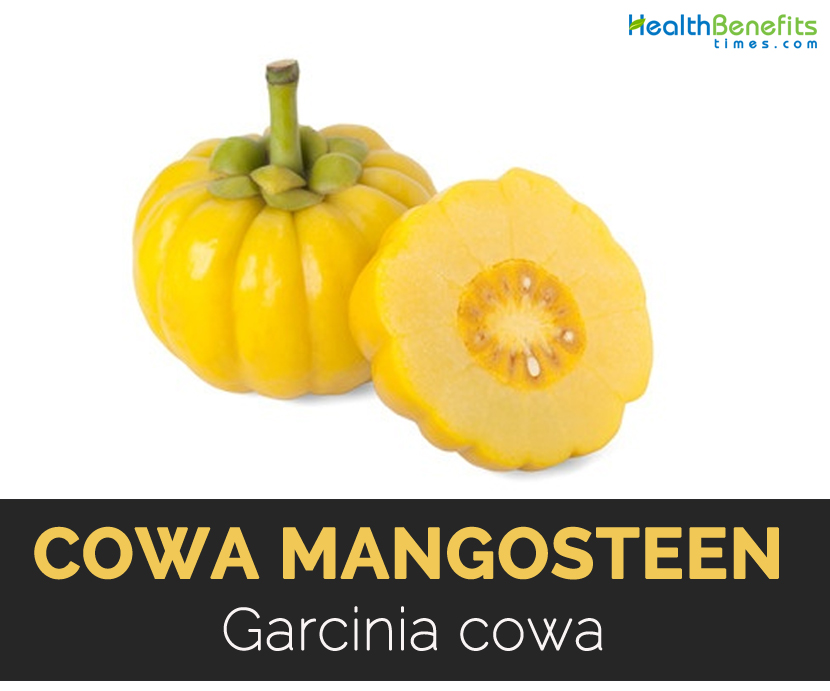| Cowa Mangosteen Quick Facts | |
|---|---|
| Name: | Cowa Mangosteen |
| Scientific Name: | Garcinia cowa |
| Origin | East India (Assam, Bengal, Mizoram, Bihar and Orissa), Nepal, Myanmar, Kampuchea, Thailand, Laos, Vietnam and northern Peninsular Malaysia |
| Colors | Dull orange or yellow |
| Shapes | Subglobose, 2.5-6 cm |
| Flesh colors | Pale orange |
| Taste | Sour |
- Bark is used as antipyretic and antimicrobial agent.
- Fruits and leaves are used to improve blood circulation, relieve cough, indigestion and fever.
- The sun dried fruit slices are used to treat dysentery in Eastern India.
- Fruit and leaves have been used for indigestion and improvement of blood circulation.
Culinary uses
- Fruits are made into preserves and jams.
- The sun dried sliced pieces are used to add flavor in various Malay cuisines.
- In Myanmar, Malaysia and Thailand, young leaves and tender leafy shoots are used as vegetables.
- In Thailand, young leaves are consumed cooked. It is also cooked with fish.
- In Vietnam, fruits are used to impart acidic flavor to fish and crab dishes.
References:
https://www.itis.gov/servlet/SingleRpt/SingleRpt?search_topic=TSN&search_value=21483#null
https://www.japsonline.com/admin/php/uploads/1426_pdf.pdf
https://shodhganga.inflibnet.ac.in/bitstream/10603/6470/9/09_chapter%201.pdf
http://tropical.theferns.info/viewtropical.php?id=Garcinia+cowa
https://www.jircas.affrc.go.jp/project/value_addition/Vegetables/054.html
Awesome
Comments
comments
